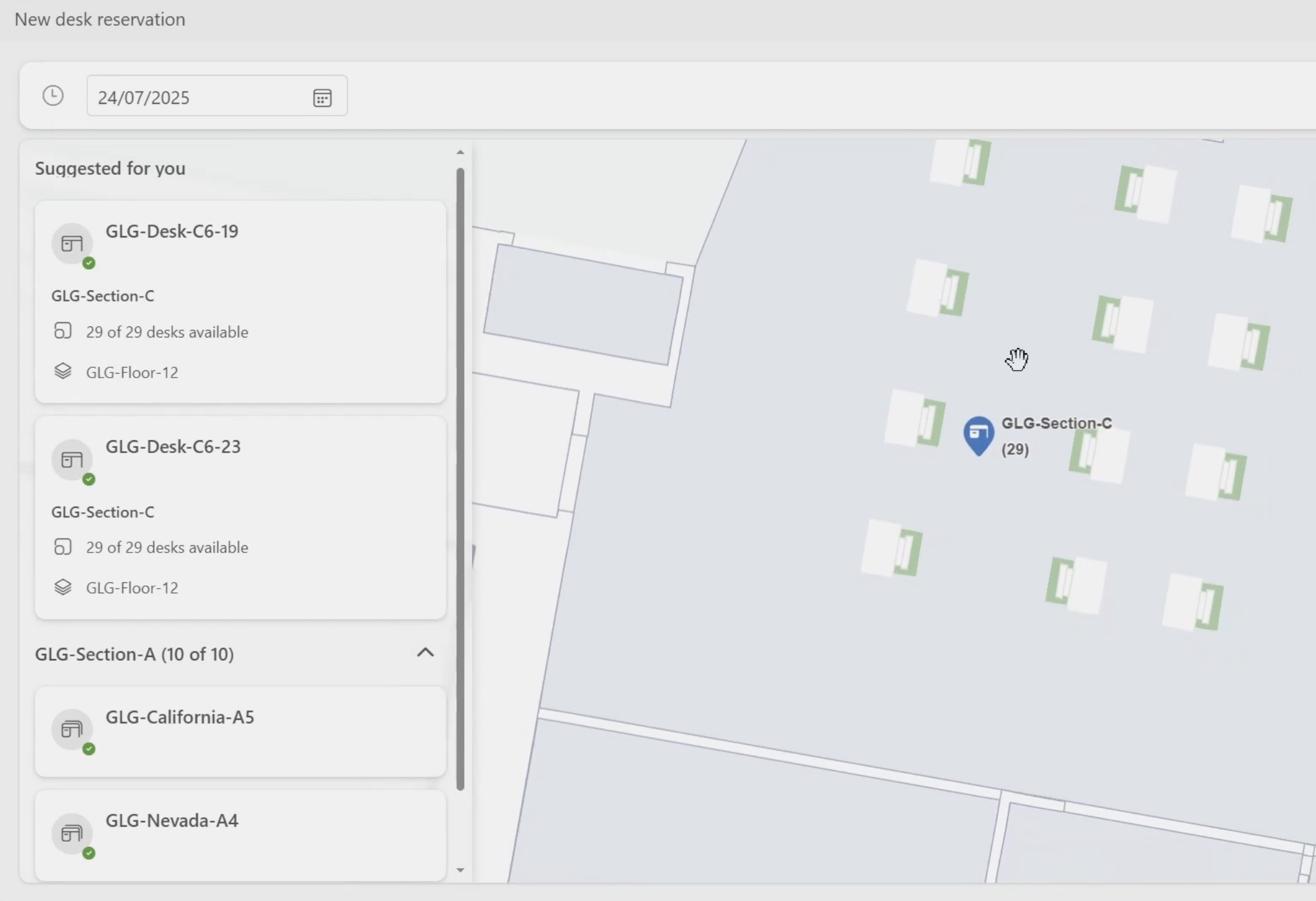From Floor Plans to Smart Spaces: How Archilogic Creates IMDF Files for Microsoft Places
Archilogic makes it easy to get IMDF Files for Microsoft Places
TL;DR
If you need to get your floor plans into Microsoft Places but the IMDF file process feels overwhelming you're not alone. At Archilogic, we make it easy: upload your plans in any format, map your Microsoft Exchange IDs quickly with our visual editor, and export high-quality, ready-to-import IMDF files. Our solution means no more complex manual conversions, faster onboarding, and AI-ready spatial data that integrates with your workplace systems. Read on to see how we streamline IMDF creation to save you time and get you started quickly.
Introduction
In the rapidly evolving landscape of workplace management, one challenge stands out: the complex journey from traditional floor plans to the intelligent, AI-ready spatial data that modern platforms like Microsoft Places require. While many organizations struggle with the technical intricacies of Indoor Mapping Data Format (IMDF) files, we positioned Archilogic as a System of Record for Spatial Building Data that can export any file format - including IMDF.
The Hidden Crisis in Enterprise Spatial Data
Facility managers, IT administrators, and workplace strategists face a challenge: Microsoft Places requires IMDF files to enable its powerful workplace management features, but creating these files has become a significant bottleneck. The traditional process involves:
- Manual conversion of CAD files with specialized technical knowledge
- Complex georeferencing and data correlation
- Time-intensive validation and troubleshooting processes
- Lack of standardization across different data sources
This creates a last-mile-problem in indoor mapping—the gap between having floor plans and making them truly useful for modern workplace applications.
Breaking Down the IMDF Barrier
IMDF, originally developed by Apple and now adopted as an open standard, represents indoor spaces using a GeoJSON-based format that includes building footprints, floor levels, individual units, and spatial relationships. For Microsoft Places specifically, organizations need four critical files: building.geojson, footprint.geojson, level.geojson, and unit.geojson.
But the complexity doesn’t stop at file creation. Organizations must:
- Ensure precise spatial correlation between Exchange resources and physical spaces
- Maintain georeferenced accuracy for proper visualization
- Handle the intricate parent-child relationships between buildings, floors, sections, and rooms
- Navigate PowerShell commands and technical configurations
As one frustrated IT administrator shared on Reddit: “Microsoft Places wants an IMDF file for indoor mapping, but creating these files manually is incredibly complex”. This sentiment echoes across forums and technical communities, highlighting the urgent need for accessible solutions.

Archilogic’s Approach: Minimize Friction, Future-Proof Data
Where others see technical complexity, we’ve built opportunity. Our platform transforms the IMDF creation process from a technical nightmare into a streamlined workflow. Here’s what sets us apart:
1. Accept Any Format, Deliver IMDF Excellence
Unlike traditional approaches that require specific file types, we accept floor plans in virtually any format—JPG, PNG, PDF, DWG, or DXF. Our white-glove onboarding service handles the technical conversion, eliminating the need for specialized CAD knowledge or expensive consultants.
2. Web-Based Simplicity
The Archilogic Editor revolutionizes floor plan management and editing by making it accessible to non-technical staff. No more AutoCAD licenses or specialized training—updates happen through an intuitive web interface that anyone can master. Our Microsoft Places Plugin makes data mapping a breeze. Check out this video to see for yourself how easy it is.
.png)
3. Future-Proofing your Work
At the heart of our innovation is Space Graph, a graph-based data model that goes beyond traditional floor plans. This isn’t just about pretty pictures—it’s about creating AI-ready spatial data that supports you in future integrations, no matter where you’d like to use your floor plans and spatial building data. Read our views on closing the feedback loop between spatial and operational data here.
.png)
Beyond Technical Solutions: The Strategic Value
The real power of our approach extends far beyond solving the IMDF challenge. By creating true digital twins instead of static floor plans, organizations unlock:
Predictive Space Optimization
With AI-ready spatial data, organizations can analyze usage patterns, predict future needs, and optimize layouts before making physical changes. This shifts facility management from reactive to proactive, saving costs and improving employee satisfaction.
Integration Ecosystem
Our platform connects with ServiceNow, Microsoft Power BI, Zapier, and numerous other enterprise systems. This means spatial data flows seamlessly across the organization, breaking down silos between facilities, IT, and HR departments.
Future-Proof Infrastructure
As one industry expert noted: “The organized spatial data inherent in digital twins will be necessary for creating sustainable, optimized buildings that are good for both the bottom line and for the people that live and work in those buildings”.
Looking Ahead: The Convergence of AI and Spatial Intelligence
As Microsoft Places evolves and AI capabilities expand, the organizations with robust, connected spatial data will have distinct advantages. Our platform positions enterprises to:
- Enable AI-driven space recommendations based on real-time data
- Automate compliance checking for workplace standards
- Predict and prevent space-related issues before they impact productivity
- Create truly responsive environments that adapt to changing needs
The journey from static floor plans to intelligent spatial systems represents more than a technical upgrade—it’s a fundamental shift in how organizations understand and optimize their physical assets. Solving the IMDF challenge is a first step to get floor plans AI-ready so the physical environment can start enjoying the same benefits we’re seeing in all other data classes.
For facility managers, IT leaders, and workplace strategists facing the Microsoft Places implementation challenge, the message is clear: the tools now exist to transform your spatial data into a competitive advantage. Archilogic can support you in getting there within days.
Click the button below to learn more.
 Share
Share









